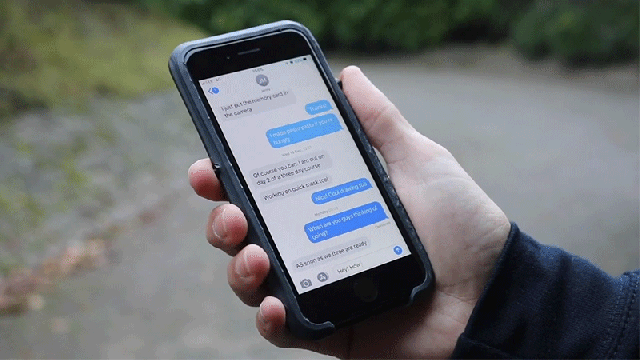As smartphone screens have grown, using their on-screen keyboards with one hand has become problematic for anyone without lanky digits. Dougie Mann’s TypeCase might be the solution. It’s a smartphone case packed with electronics and five buttons meant to make single-handed typing doable again. You don’t even need to look at the screen to do so — once you get the hang of it.
The case functions as a chording (or chorded) keyboard, where combinations of multiple keys are pressed at the same time to trigger various inputs — in the same way multiple keys on a piano are pressed to play a musical chord. In this case, five buttons located around the perimeter of the case, corresponding to a hand’s five fingers, can be pressed to not only enter all 26 letters of the alphabet but to also navigate a smartphone’s UI the same way a connected keyboard can.
Chording keyboards are known to have a bit of a learning curve. Your touch typing skills that vaguely apply to an on-screen keyboard won’t be much use here, but the human brain is highly adaptable, and besides letting you easily type one-handed, you don’t actually need to look down at a chording keyboard because your fingers never leave the buttons.
With rumours swirling about everyone from Apple to Facebook working on smart glasses, a one-handed keyboard could finally help make that technology a reality by allowing you to easily respond to messages without having to also look at a keyboard. As capable as voice-activated smart assistants have become, users don’t want to have to always talk to their mobile gadgets to use them, especially when out in public.
Mann’s TypeCase does a lot more than streamline one-handed typing, however. There are motion sensors inside so the case can also detect gestural inputs as well, which is useful for scrolling and other customisable shortcuts. And because it connects to devices over Bluetooth, the TypeCase could even be used as a wireless mouse and keyboard for a computer.
If you’ve ever struggled to get any actual work done in a cramped aeroplane seat during a flight, you know the challenges of trying to type on a laptop keyboard without incessantly elbowing the person sitting next to you. The TypeCase could be just as useful in those applications, too.
Sadly, Mann’s creation currently exists as only a prototype. But it seems like a genuine solution for a bunch of problems on the near horizon as the smartphone slowly gets replaced by wearable technology that brings along with it a long list of usability concerns.
